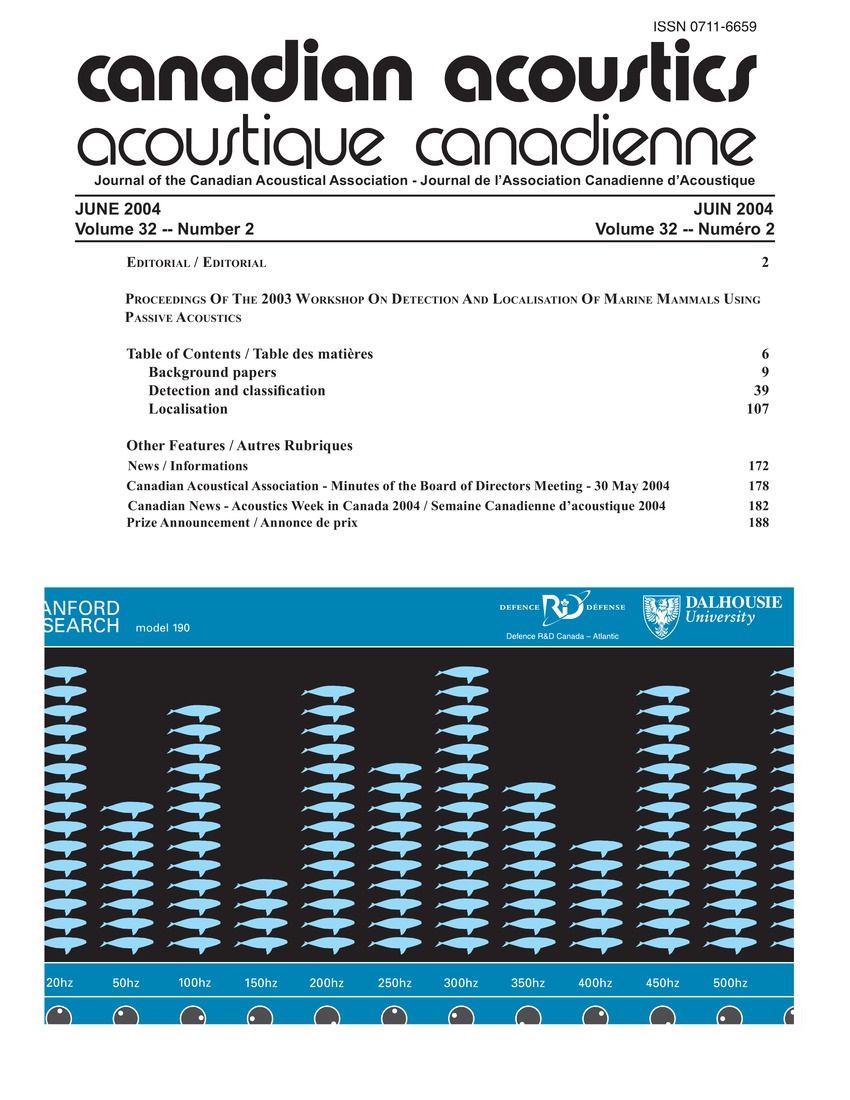Comparing a linear with a non-linear method for acoustic localization
Keywords:
Acoustic waves, Correlation methods, Error analysis, Nonlinear systems, Problem solving, Signal theory, Acoustic localization, Error bounds, Non-linear methods, Path geometryAbstract
The performance of two different acoustic localization techniques is evaluated with signals from right whales in the Bay of Fundy. The methods are compared to the GPS localization error (114-273 m, N=3) through the use of played back whale calls. The linear approach underestimates the source location error (22 m, N=3), whereas the non-linear approach exaggerates the error (462-1166 m, N=3). The linear approach may render unrealistic error bounds because of the inherent non-linear properties of the localization problem. The non-linear approach may exaggerate error bounds by choosing the wrong cross-correlation peak for the time-of-arrival difference measurements. Whereas the GPS localization error was always contained within the non-linear error bounds it was never contained within the linear error localization bounds. This indicates that the non-linear approach can give more realistic error estimates, especially in situations where the sound path geometry is unknown. [Work supported by the Office of Naval Research and the Oticon Foundation].Additional Files
Published
How to Cite
Issue
Section
License
Author Licensing Addendum
This Licensing Addendum ("Addendum") is entered into between the undersigned Author(s) and Canadian Acoustics journal published by the Canadian Acoustical Association (hereinafter referred to as the "Publisher"). The Author(s) and the Publisher agree as follows:
-
Retained Rights: The Author(s) retain(s) the following rights:
- The right to reproduce, distribute, and publicly display the Work on the Author's personal website or the website of the Author's institution.
- The right to use the Work in the Author's teaching activities and presentations.
- The right to include the Work in a compilation for the Author's personal use, not for sale.
-
Grant of License: The Author(s) grant(s) to the Publisher a worldwide exclusive license to publish, reproduce, distribute, and display the Work in Canadian Acoustics and any other formats and media deemed appropriate by the Publisher.
-
Attribution: The Publisher agrees to include proper attribution to the Author(s) in all publications and reproductions of the Work.
-
No Conflict: This Addendum is intended to be in harmony with, and not in conflict with, the terms and conditions of the original agreement entered into between the Author(s) and the Publisher.
-
Copyright Clause: Copyright on articles is held by the Author(s). The corresponding Author has the right to grant on behalf of all Authors and does grant on behalf of all Authors, a worldwide exclusive license to the Publisher and its licensees in perpetuity, in all forms, formats, and media (whether known now or created in the future), including but not limited to the rights to publish, reproduce, distribute, display, store, translate, create adaptations, reprints, include within collections, and create summaries, extracts, and/or abstracts of the Contribution.


